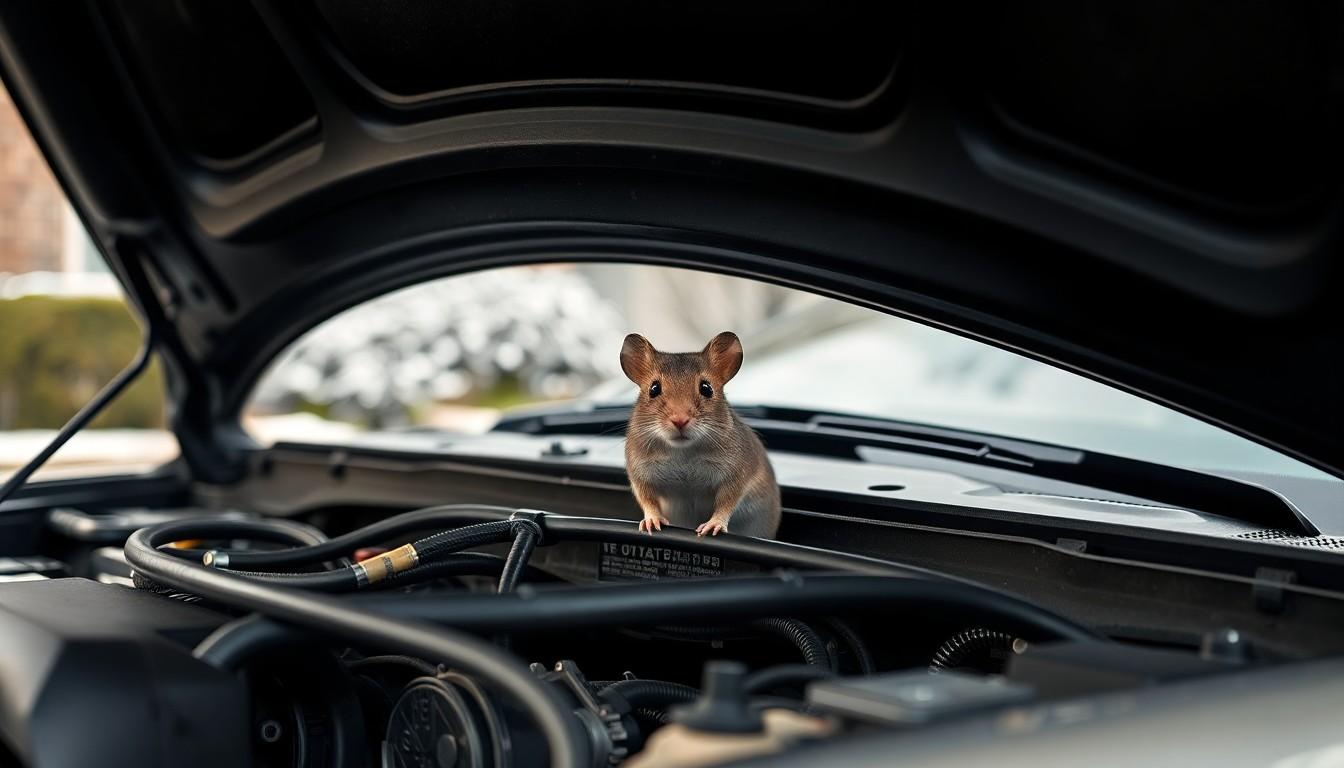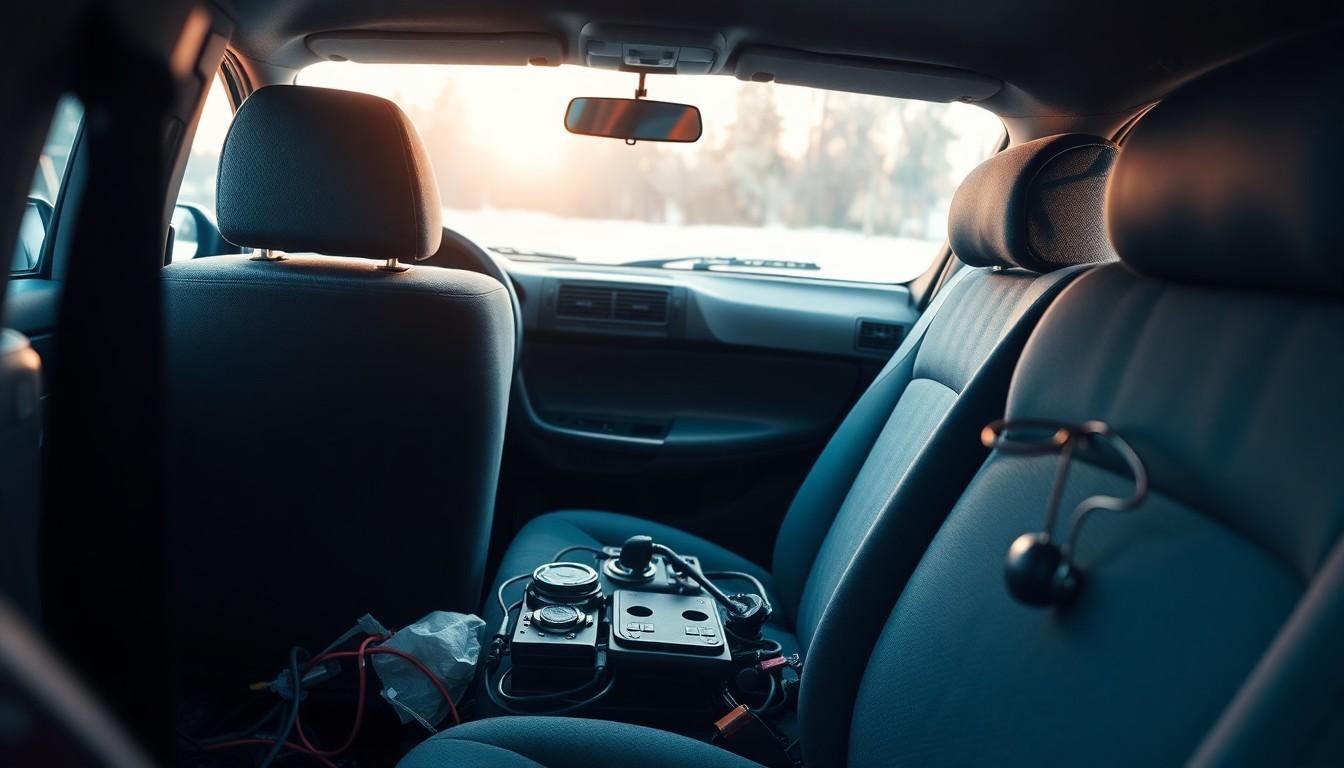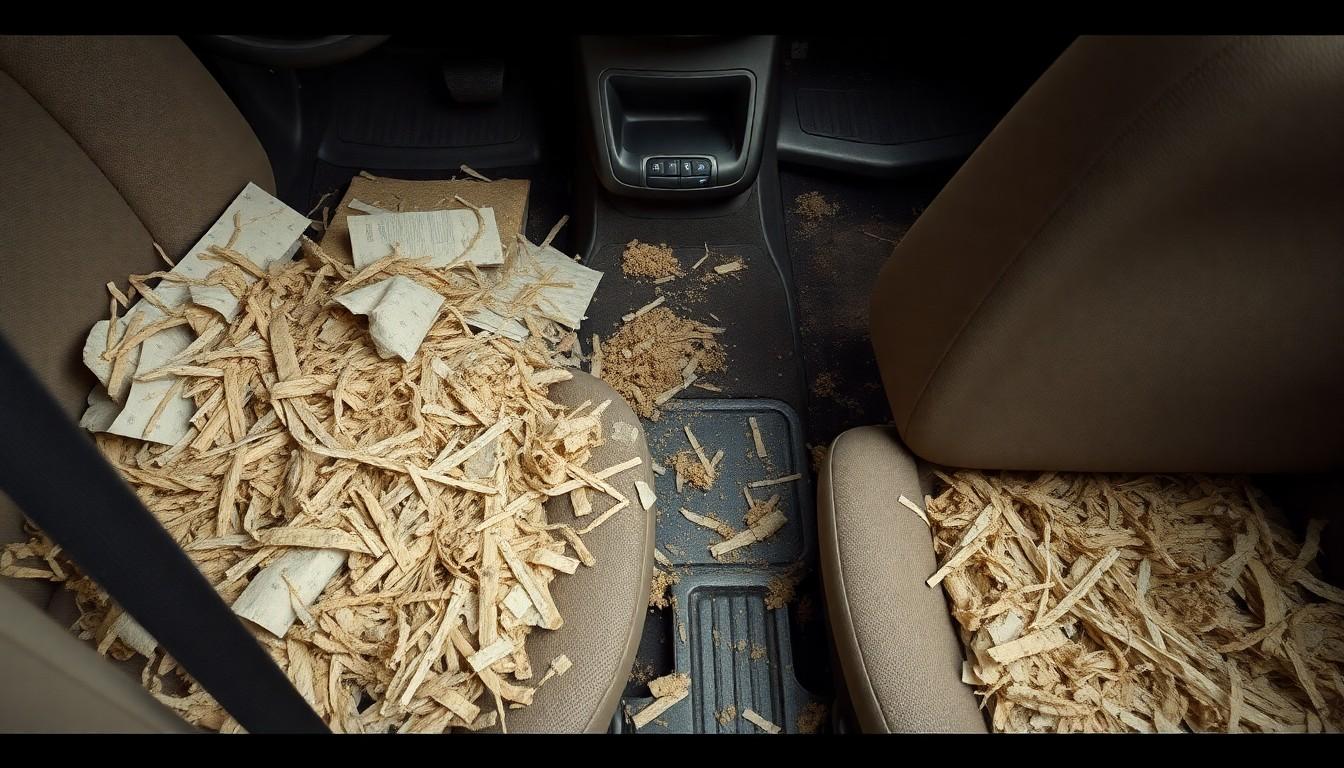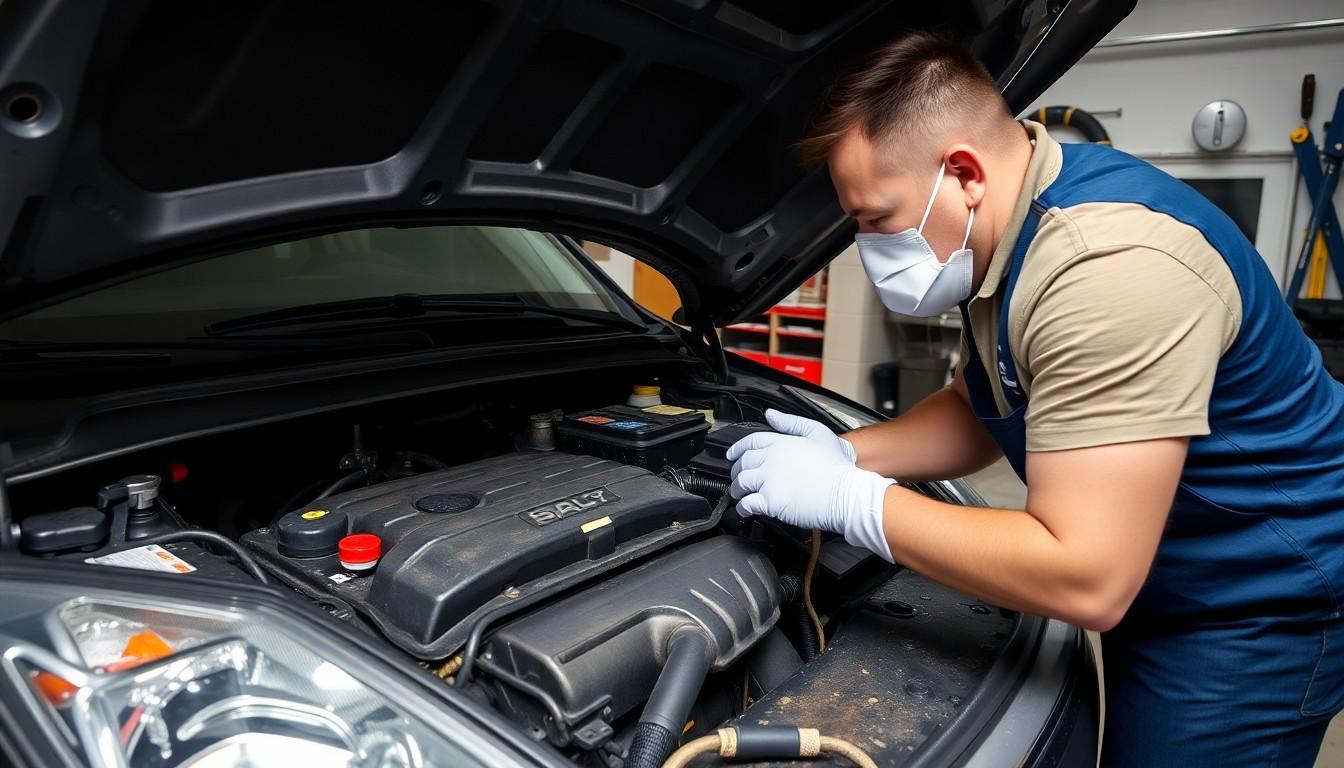Discovering mice in your vehicle can be startling, but have you ever wondered if these tiny stowaways remain aboard while you’re driving? We’ve investigated this common concern that many vehicle owners face when they find signs of rodent activity in their cars.
The truth is, mice are remarkably adaptable creatures that can make themselves at home in the most unexpected places—including your vehicle. Whether they’re seeking shelter from harsh weather or attracted to food crumbs beneath your seats, these unwanted passengers might be more persistent than you’d think. Let’s explore what really happens to mice in your car when you hit the road and what steps you can take to evict these uninvited guests for good.
Understanding Mice Behavior in Vehicles
Mice exhibit predictable patterns when they’ve established residence in your vehicle. These small rodents typically seek warm, protected spaces away from predators, making cars ideal habitats with many hiding spots. Cars provide mice with shelter from harsh weather conditions, protection from natural predators, and sometimes even food sources from crumbs or trash left inside.
When a vehicle is stationary, mice create nests using available materials like upholstery, insulation, and paper. They’re particularly attracted to engine compartments due to the residual warmth after driving. Mouse nests are commonly found in air filters, glove compartments, trunk areas, and underneath seats where they feel secure and undisturbed.
During vehicle operation, mice respond primarily to the sudden noise, vibration, and movement. Most mice frantically search for exits or retreat deeper into hiding spots when sensing these disturbances. The engine’s noise and vibration create an extremely stressful environment for rodents, triggering their flight response. Some mice may attempt to escape through wheel wells or undercarriage gaps while the vehicle is in motion.
Research indicates that while many mice abandon vehicles once driving begins, some remain hidden in deeply concealed areas. Mice that stay during drives are typically those that have established well-protected nests in areas minimally affected by the vehicle’s movement. Their survival instinct compels them to remain motionless and hidden rather than risk exposure by attempting to flee during operation.
Why Mice Enter Cars in the First Place

Mice seek out vehicles for shelter, warmth, and potential food sources. These resourceful rodents see cars as ideal habitats, particularly during colder months when outdoor conditions become harsh.
Common Entry Points for Mice
Mice access vehicles through many small openings that car owners often overlook. Vents serve as primary entryways, allowing rodents easy access to a vehicle’s interior compartments. Small gaps and openings around the engine compartment provide direct routes to warm, protected areas ideal for nesting. Cars parked near bird feeders, dumpsters, or garages containing pet food face increased risk of mouse invasion as these nearby food sources attract rodents that later discover the shelter a vehicle provides.
Attractive Features of Vehicles to Rodents
Engine heat draws mice to cars, especially during winter when warmth becomes a survival necessity. Dark, confined spaces beneath the hood and throughout the interior create perfect hiding spots, protecting mice from predators and human detection. Food particles and crumbs left inside vehicles provide sustenance, while modern soy-based wire insulation offers an unexpected food source that mice readily consume. Materials commonly found in cars—such as paper and upholstery fragments—supply excellent nesting materials that mice collect and arrange in secure locations within the vehicle.
Do Mice Remain in Cars While Driving?

Mice generally avoid staying in moving vehicles due to their instinctual preference for stable environments. Their natural behaviors and survival mechanisms influence whether they’ll remain in a car while it’s in motion, though under certain circumstances, some mice might endure short drives.
The Impact of Vehicle Movement on Mice
Vehicle movement creates an unstable environment that mice typically try to escape. Most mice prefer to abandon a moving car because the vibrations, noise, and unpredictable motion contradict their need for security. But, mice that have established nests or hiding spots within the vehicle might remain during short drives if they feel sufficiently protected. Several factors influence how long a mouse stays in a moving car, including food availability, the vehicle’s interior layout, and external weather conditions. During extreme cold or heat, mice are more likely to tolerate movement as the car provides essential shelter from harsh elements.
Survival Instincts and Hiding Behaviors
Mice’s nocturnal nature and preference for undisturbed spaces drive them to find secure hiding spots within vehicles. They commonly nest in engine compartments, air vents, under seats, and other confined spaces that offer protection and minimal human contact. These rodents’ remarkable adaptability allows them to adjust to various conditions within a car. If your vehicle provides adequate hiding spots with minimal disturbance, mice might feel secure enough to remain present during brief drives. Signs of mouse infestation include droppings, chewed wires, damaged upholstery, and unpleasant odors—all indicators that mice have been active in your vehicle regardless of whether they’re present during your commute.
Signs That Mice Are Living in Your Vehicle

Recognizing mouse infestation in your vehicle early can help prevent extensive damage and health risks. Here are the telltale indicators that mice have made themselves at home in your car.
Visual Evidence to Look For
Mouse droppings and urine stains provide clear evidence of rodent presence in your vehicle. These markers typically appear in hidden areas where mice frequent, such as under the dashboard, in the trunk, or on floor mats. Nesting materials scattered throughout your car signal that mice are settling in for the long haul – they’ll tear up insulation, cardboard, and other soft materials to build comfortable homes in engine compartments and air ducts. Food remnants in unexpected places, like acorns, dog food, bird seed, or old French fries tucked away in corners, strongly suggest mouse activity. Occasionally, you might catch sight of an actual mouse or rat jumping out from under a seat or scurrying around your vehicle’s interior.
Unusual Sounds and Smells
Strange rumbling or vibrating noises coming from your heater or fan often indicate mice have constructed nests in the blower motor or ventilation system. These sounds become particularly noticeable when operating climate control features. Foul odors permeating your car’s interior point to mouse infestation – the unmistakable smell comes from urine, droppings, or unfortunately, a deceased mouse decomposing in a hidden location. The stench becomes especially prominent when turning on your air conditioning, as the system circulates these odors throughout the cabin. Mice remaining in vehicles while driving typically hide in sheltered areas like the engine compartment or under the dashboard where they feel protected from disturbances, though they’re primarily active at night when the car is stationary.
Health and Safety Concerns of Mice in Cars

Mice infestations in vehicles create important health risks and can cause expensive damage. These nocturnal creatures are most active from dusk till dawn, making parked cars particularly vulnerable, especially during winter months when rodents seek shelter from harsh weather.
Health Risks to Passengers
Mouse presence in vehicles poses serious health concerns for passengers. These rodents can carry many diseases and parasites, including hantavirus, leptospirosis, and fleas, which may transfer to humans occupying the infested vehicle. Evidence of mice, such as droppings on floor mats, seats, or the dashboard, indicates not just an infestation but also potential exposure to harmful pathogens.
Respiratory issues can develop from inhaling particles of dried mouse urine or feces, particularly dangerous for people with existing allergies or asthma. Children and immunocompromised individuals face even greater risks when exposed to these contaminants in the confined space of a vehicle.
Potential Vehicle Damage
Mice create extensive and costly damage to vehicles through their constant gnawing behavior. Their tendency to chew through electrical wiring in the engine compartment often results in mechanical failures, preventing cars from starting or operating correctly. This electrical damage increases the risk of car fires, creating a severe safety hazard.
The destruction extends beyond wiring to include belts and hoses under the hood, potentially leading to engine malfunctions or complete breakdowns. Upholstery and insulation suffer as mice tear through seats and foam to create nesting materials, leaving unexpected holes and compromising the vehicle’s interior condition.
Access points for mice include small openings such as vents, side vents, rocker panels, and ducting, allowing them to damage components throughout the vehicle. Repairing this rodent-related damage often costs hundreds or thousands of dollars, depending on the affected systems.
Keeping vehicles clean, parking away from rodent-friendly environments like tall grass or woodpiles, and using effective rodent repellents help minimize these risks. Regular inspections of the engine compartment and interior spaces can catch infestations early before important damage occurs.
How to Prevent and Remove Mice from Your Vehicle

Protecting your vehicle from mouse infestations requires both preventive measures and effective removal techniques. Mice seek shelter in cars for warmth and safety, but with the right approach, you can keep these unwanted passengers away from your vehicle.
Effective Deterrents
Sealing all potential entry points serves as the first line of defense against mice infiltration. Carefully inspect your vehicle for gaps and holes, particularly around the engine compartment, and seal them with caulk or weatherstripping. Eliminating food sources dramatically reduces the attraction for mice, so avoid eating in your car and clean up any crumbs or spills immediately. Parking away from known rodent hotspots like bird feeders, dumpsters, and pet food storage areas further reduces infestation risks.
Commercial mouse repellents from home improvement stores offer reliable protection against rodent invasions. Many drivers find success with natural deterrents such as peppermint oil, though effectiveness varies between products and situations. Regular inspection of wiring, especially in newer vehicles with soy-based insulation, helps identify early signs of rodent activity before important damage occurs.
Safe Removal Methods
When dealing with an existing mouse problem, wearing protective gear including gloves, masks, and appropriate clothing is essential to avoid exposure to diseases like hantavirus. Remove all nesting materials carefully, looking in common hiding spots such as under the hood, behind the dashboard, and under seats. Thoroughly clean and disinfect all affected areas after removing mouse evidence to eliminate remaining contaminants.
Setting appropriate traps in strategic locations can effectively capture mice that have taken residence in your vehicle. Place traps in areas showing signs of mouse activity, ensuring they don’t pose risks to humans or pets. For severe infestations, consulting pest control professionals provides the safest and most comprehensive solution, especially if your own efforts haven’t resolved the problem. After successful removal, immediately seal all entry points to prevent future infestations and maintain regular inspections of your vehicle.
Conclusion
Mice in vehicles present both health hazards and costly damage risks that shouldn’t be ignored. While these rodents typically prefer stable environments and many will flee when a car starts moving some may remain hidden during drives especially in vehicles offering ample shelter and food sources.
Taking preventive measures like regular cleaning parking strategically and sealing entry points can significantly reduce your risk of hosting these unwanted passengers. If you notice signs of infestation such as droppings unusual odors or chewed materials act quickly to remove the mice and sanitize your vehicle.
Remember that addressing a mouse problem early not only protects your car’s mechanical integrity but also safeguards your health and that of your passengers. With vigilance and proper maintenance we can keep our vehicles rodent-free and ensure safe comfortable travels.
Frequently Asked Questions
Can mice stay in your car while you’re driving?
Mice generally prefer stable environments and tend to flee when a car starts moving due to noise, vibration, and movement. However, some mice might remain hidden in secure areas during short drives if they feel protected enough. The likelihood of mice staying in a moving vehicle depends on factors like food availability, interior layout, and weather conditions.
Why would mice enter my car in the first place?
Mice enter cars seeking shelter, warmth, and food sources, especially during colder months. Vehicles provide an ideal environment with engine heat, dark hiding spots, and often food particles from passengers. Modern cars with soy-based wire insulation are particularly attractive to rodents. Cars parked near food sources like bird feeders or dumpsters are at higher risk of mouse infestation.
What are the common entry points for mice in vehicles?
Common entry points include vents, gaps around cables and wires, spaces around the engine compartment, wheel wells, and small openings in the undercarriage. Mice can squeeze through holes as small as a dime (about 1/4 inch), making seemingly insignificant openings potential access points. Damaged weatherstripping around doors and windows can also provide entry for these persistent rodents.
What signs indicate I have mice in my car?
Look for mouse droppings (small, dark pellets), chewed wires or upholstery, nesting materials (shredded paper or fabric), unusual odors, visible gnaw marks on interior components, and strange noises like scratching or scurrying. You might also notice issues with your car’s electrical system if mice have damaged wiring. Finding these signs indicates an infestation, whether or not mice remain during drives.
What health risks do mice in cars pose?
Mice in cars pose serious health risks as they carry diseases and parasites including hantavirus, leptospirosis, and salmonellosis. Inhaling particles from mouse droppings and urine can cause respiratory issues or allergic reactions. Children and individuals with compromised immune systems are particularly vulnerable. Mouse infestations can contaminate the vehicle’s ventilation system, spreading these health hazards throughout the cabin.
Can mice cause damage to my vehicle?
Yes, mice can cause extensive and costly damage to vehicles. They gnaw on electrical wiring, which can lead to short circuits and system failures. Rodents also damage upholstery, insulation, and plastic components when building nests. Engine damage can occur if mice chew through important cables or hoses. These issues not only result in expensive repairs but can create fire hazards and safety concerns.
How can I prevent mice from entering my car?
Keep your car clean and free of food debris. Park away from rodent-friendly environments like tall grass, woodpiles, or dumpsters. Use deterrents such as peppermint oil, dryer sheets, or commercial repellents in your vehicle. Seal potential entry points with steel wool or caulk. Consider using ultrasonic repellers designed for vehicles. Regularly inspect your car, especially after it’s been parked for extended periods.
What’s the best way to remove mice from my vehicle?
For safe removal, wear protective gear and set humane traps baited with peanut butter or seeds in strategic locations like the footwells or near the engine. Check traps regularly. For severe infestations, consult professional pest control services. After removal, thoroughly clean and disinfect your car, focusing on areas with droppings or urine. Seal entry points to prevent future infestations and consider using deterrents as ongoing prevention.

